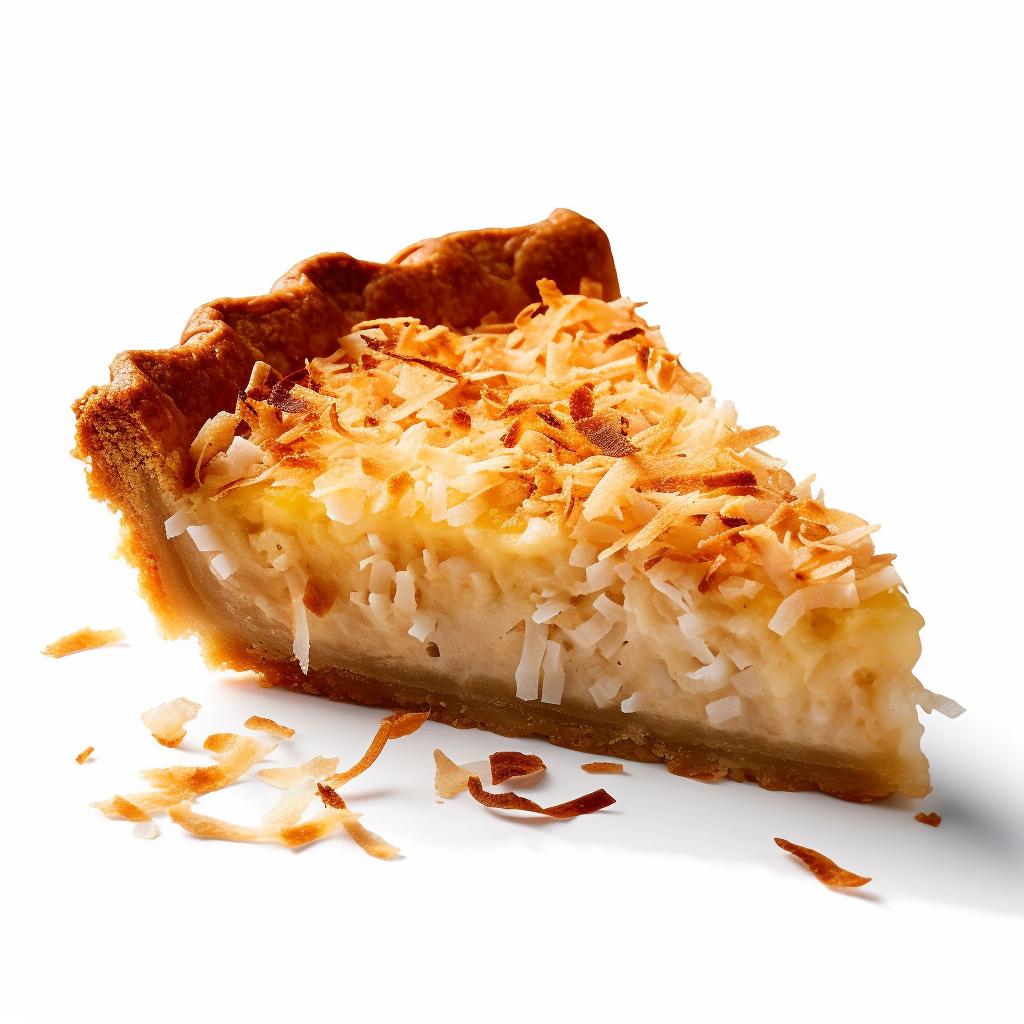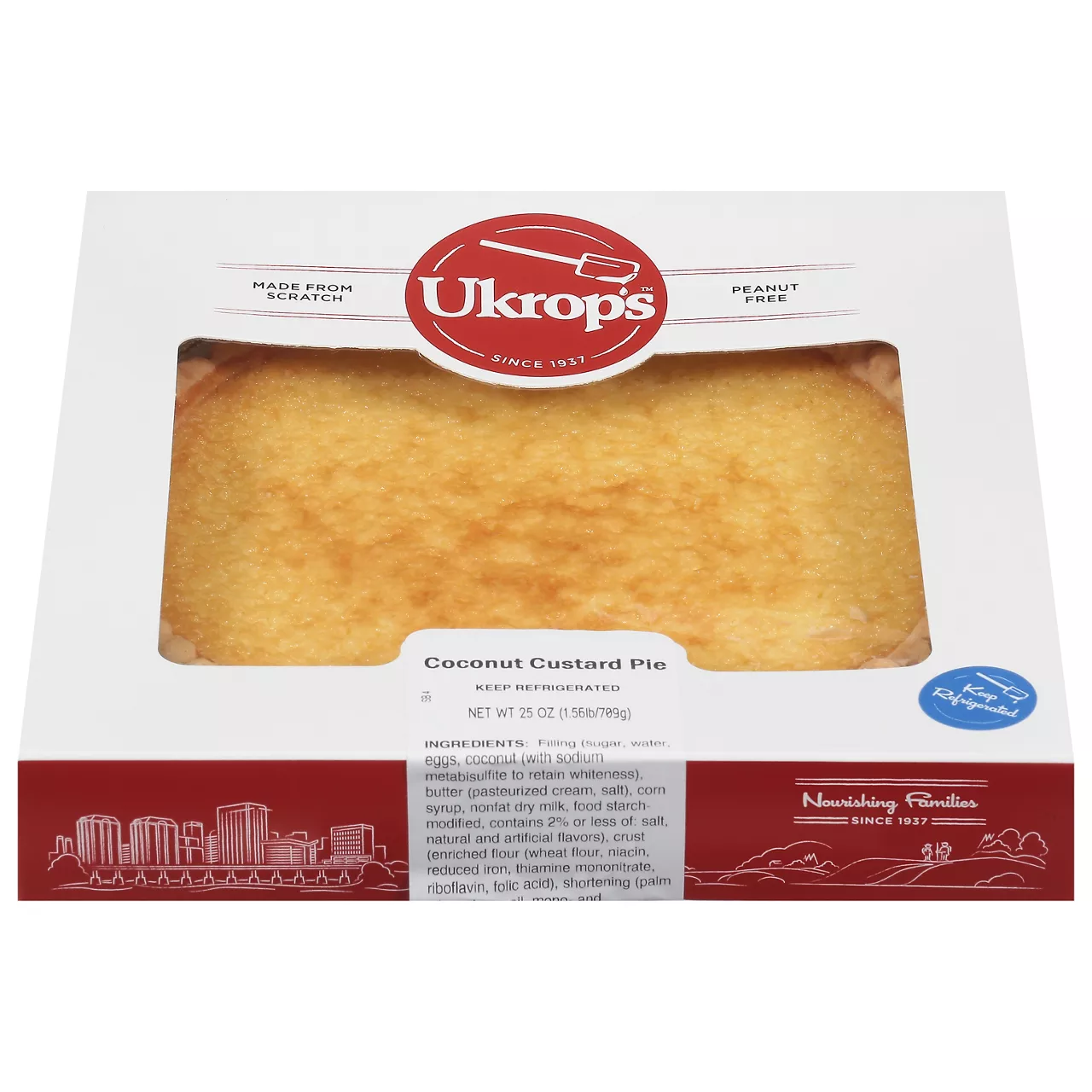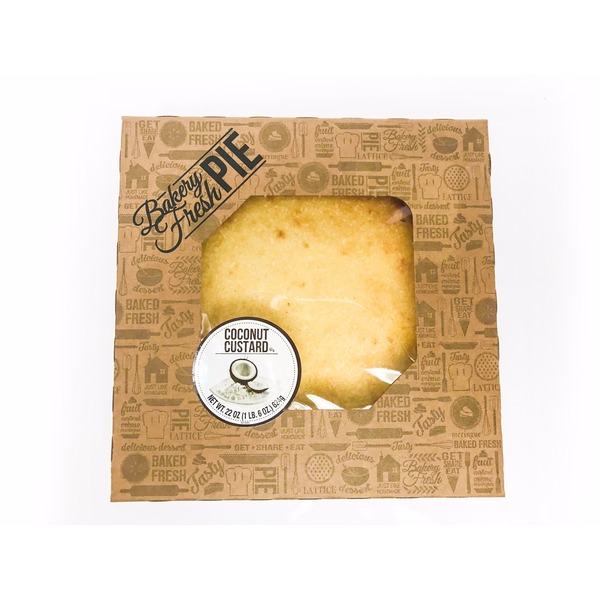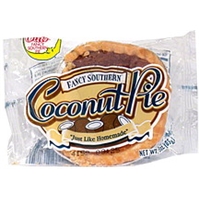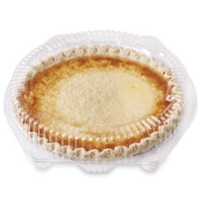Coconut Pie
Coconut pie is a standout dessert that's perfect for fans of both pie and tropical flavors. Made from a mouthwatering blend of shredded coconut, cream, sugar, and eggs, and often housed in a buttery, flaky crust, this pie is indulgent and comforting. It's usually quite sweet and has a pleasingly rich, creamy texture punctuated by the delightful crunch of coconut.
Coconut pie is perfect for a special occasion meal or an exciting change from regular dessert offerings. It's also suitable for making ahead, as the pie holds up well for a couple days. Served chilled or at room temperature, it truly brings a slice of the tropics into your home.
65%
CARBS
29%
FAT
6%
PROTEIN
13 Coconut Pie Products
Coconut Pie FAQ
Despite its exotic flavors, coconut pie can be a straightforward dish to prepare - if you know the right techniques. Some common hurdles include the pie crust becoming soggy, the filling not solidifying properly, or the coconut burning too quickly. It’s advised to pre-bake the crust slightly before adding the filling to prevent sogginess. If your filling doesn't set, it may be because it wasn't cooked long enough, or the balance of milk to egg was off.
To get the most out of your coconut pie, select high-quality coconut - whether you’re using fresh or desiccated, it should have a sweet, fresh smell and be free of mold. If you're using fresh coconut, make sure to remove all the brown skin, as it can impart a bitter taste.
Slightly toasting your coconut before incorporating into the filling can deepen the flavours, but watch it closely as it can burn quickly. If you find your pie is browning too rapidly in the oven, loosely tent a piece of aluminum foil over the top to prevent burning.
A well-executed coconut pie can truly be a showstopper on any dessert table. Happy baking!
How do I prevent the edges of my pie from burning?
Why is my pie crust soggy?
Why isn't my pie filling solidifying?
How to repair a broken pie crust?
Can I use fresh coconut instead of desiccated coconut?
My pie is browning too fast. What should I do?
Should I serve coconut pie warm or chilled?
What type of crust works best for a coconut pie?
My coconut pie is too sweet. How can I balance the sweetness?
How do I ensure my pie has a strong coconut flavor?
Substitutes

Pie

Banana Cream Pie

Pumpkin Pie

Peanut Butter Pie

Lemon Meringue Pie

Sweet Potato Pie

Coconut Cream Pie

Key Lime Pie

Crumb Crust

Pecan Pie
See All
Health Info
Macros
40g
CARBS
17g
FAT
3g
PROTEIN
Allowed on these diets
LOW FAT
HIGH CALCIUM
VEGETARIAN
GLUTEN FREE
Contains these allergens
EGGS
MILK
